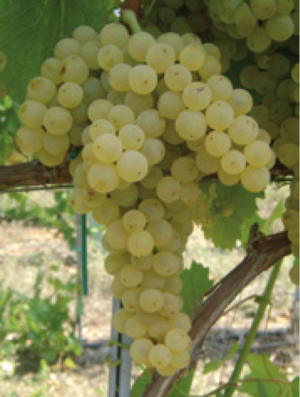It's summer and you're on your dream vacation in Rome. The Eternal City can be like a sauna in the peak summer months, leaving visitors and Romans alike looking for some relief.
One possibility is to head southeast, a few miles to the Castelli Romani, for a glass (or two) of refreshing white wine. The 11 Castelli DOCs, of which Frascati is the best known, are within the Lazio (Latium) region, an area that has had its ups and downs.
In the plus column, improved vineyard practices and a renewed understanding of how grapes are nurtured in the local volcanic soils are behind a recent boost in wine quality. But progress is difficult as growers and vintners are forced to deal with high land prices, caused by Romans escaping the congestion of the hectic city for the quiet life among the Castelli.
Castelli Romani is a series of seven rolling hills, far enough from Rome to feel rural, yet close enough to attract day trippers, enticed by the area's many restaurants and, of course, the Castelli Romani wine. The Castelli, or "castles," are volcanic hillocks that form the Alban hills.

Modern wine making has crept into Lazio, and now exists alongside the old ways. In his illustrated reference, "Wine Atlas of Italy," 1990, the American in Italy, Burton Anderson, says "in the old days, Castelli wine was drawn from large chestnut casks, demijohns and flasks." Today, it's likely that many of those casks are for show and the finished wine is drawn from stainless steel.
Castelli Romani wines are dry, light, refreshing, and mainly white, made from Malvasia, local clones of Italy's ubiquitous Trebbiano, in the form of Trebbiano Verde and Trebbiano Soave, Moscato Bianco, plus bits and pieces of dozens of other grapes.
A few Castelli Romani, notably Marino and Velletri, make a light red wine, from the red Cesanese grape, grown mainly in Velletri DOC.
Cyril Ray, the eminent English wine writer, had a fondness for the wines of the Lazio sub-region of Marino, describing them, in his 1966 The Wines of Italy, as "fuller and more spicily fragrant" than other Castelli wines.
The dynamic American duo of Italian food and wine, Marcella and Victor Hazan, were intimately familiar with Castelli Romani and Lazio cuisine. While Marcella whipped up a platter of spaghetti carbonara, Victor wrote, in his 1982 book, Italian Wine, about the main grape of Castelli, "Malvasia dominates the blend of Roman white wine."
Problem is, Italy has a bewildering array of 20 grapes called Malvasia, all of them tracing their origin back to Greece, the ancestral home of many of Italy's grapes. Malvasia Candida is the most common form in Lazio, although Malvasia del Lazio (also known as Malvasia Puntinata) makes more distinctive white wine.
 |
| Malvasia del Lazio |
When not over cropped, Malvasia is noted for peach and apricot-like flavors, moderate acidity and a fresh fruity finish, the very definition of Castelli Romani.
Seco is the most popular style requested on local wine lists. Sweeter styles range from amabile, cannelino or dolce and spumante. All of these wines are commonly available in the trattorias of nearby Rome.
Frascati, Lazio's best-known wine, is based on a local variation of Malvasia. Officially, the blend for Frascati can also contain Trebbiano Toscana, a grape lacking varietal character, that, according to some, has diluted the wine's character.
Compounding the problems with Frascati is declining vineyard acreage due to creeping suburbia on the east side of Rome. The small town of Frascati, surrounded by vineyards, was once distant from Rome, but now it's hard to tell where Frascati ends and Rome begins.
Frascati Superiore, with lower yields and a bit more alcohol, was elevated to DOCG status in 2011, implying higher quality than standard Frascati. In their book on Italian wine and food, Vino Italiano, 2002, David Lynch and Joseph Bastianich, describe Frascati as "high-toned and fragrant."
Consumers looking for something more than a pleasant white wine, might seek out Frascati from small producers that concentrate on wine from select grapes, like Malvasia Putinata, even though the increased cost over standard Frascati, makes a sale more difficult.
It may be difficult to avoid the crowds during peak tourist season in Rome, but the promise of a glass of light and refreshing white wine awaits you in the Castelli Romani.
Next post: Argentine White Wine
Leave a comment, without signing into Google, at boydvino707@gmail.com



No comments:
Post a Comment
Note: Only a member of this blog may post a comment.